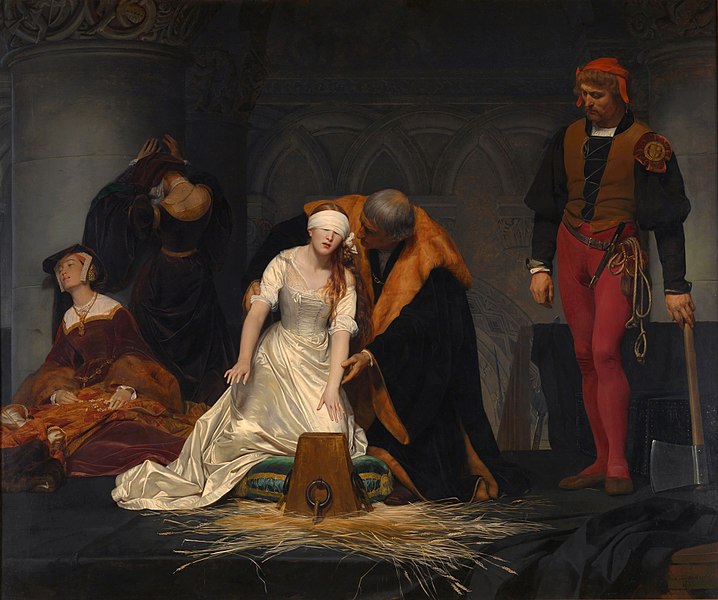In today's Remembering History, we remember the Queen with the shortest reign as a British Monarch. That honor lies with Lady Jane Grey.
Despite how complicated the lines of succession are today with regards to the British monarchy, the lines were a lot more complicated in the 1500s. Jane Grey was the daughter of the 1st Duke of Suffolk and Lady Francis Brandon. Lady Brandon was the daughter of Mary Tutor, Queen of France, which made Jane Grey and her two sisters the Great-Grandaughter of Henry VII of England.
In 1553, Jane would marry Lord Guilford Dudley, the youngest son of Edward VI chief minister, John Dudley, Duke of Northumberland. In the same year, the 15 year old Edward VI, became termanilly ill, and his council began drawing up the succession rights, as they feared England would fall back into the hands of Catholicism, if a direct line of succession wasn't established. Under the Third Succession Act 1544, Edwards two half sisters helf claim to his throne, on his death bed in 1553, Edward VI, named Jane, roughly the same age as him, she was 16, as his successor, subverting the claims of his two half-sisters.
On July 6, 1553, Edward VI died, and Jane was informed on the 9th that she was to be named Queen of England. She accepted the appointment with reluctance, as she knew Edward's will would not pass Parliament without a new Act of Succession first passing, so her claim to the throne would remain extreamly week. Jane and her husband proceeded to the Tower of London, where they would await her cornation. Jane, understanding the laws of the monarchy, refused to name her husband as King, and would issue him the title of Duke of Clarance.
The Duke of Northumberland, wanting to keep his position as Chief Minister, began to plot against the Queen in waiting. Northumberland went to Mary, the eldest of Edward VI half-sisters and began to help her build support for a claim to the throne. To his surprise, the populas supported Mary and her claim to remove the to be Queen Jane Gray from the throne.
In London, on July 9th, Northumberland proclaimed Mary I Queen of England to the great jubilee of those in attendance. Jane was imprissoned in the Tower of London, and her husband was transfered to Beauchamp Tower. They would each await their trail for High Treason. The British Parliament immediatly denounced Jane's claim to the throne as that of a usurper.
Jane was found guilty of High Treason, and for having signed a number of documents "Jane the Queen" and was to be beheaded. Her execusion was spared when word came from Charles V, Holy Roman Emperor, that he wished for her to live.
Jane would continue to live for another year until the Protestant Rebellion of Thomas Wyatt, the Younger. Jane herself had nothing to do with the rebellion, her father and her two brother joined the rebellion against Queen Mary I, and Mary would punish her for her families involvement.
her husband was beheaded in public, infront of the Tower of London in February of 1554. Jane, was taken to Tower Green, within the Tower of London to be executed in a more private environment because of her Royal Status.
According to the records, Jane's last words were the same as Jesus to Luke, "Lord, into thy hands I commend my spirit!"
Lady Jane Gray and her husband, are buried in the Chapel of St Peter ad Vincula on the north side of Tower Green.
Lady Jane Grey was Queen of England from July 10, 1553 to July 19, 1553, a total of 9 days.
She has since become viewed as a Protestant Martyr.
 |
| The Execution of Lady Jane Grey by Paul Delaroche France (1833) (The National Gallery) |
Remembering History - The 9 day Queen, Lady Jane Grey
No comments:
Post a Comment